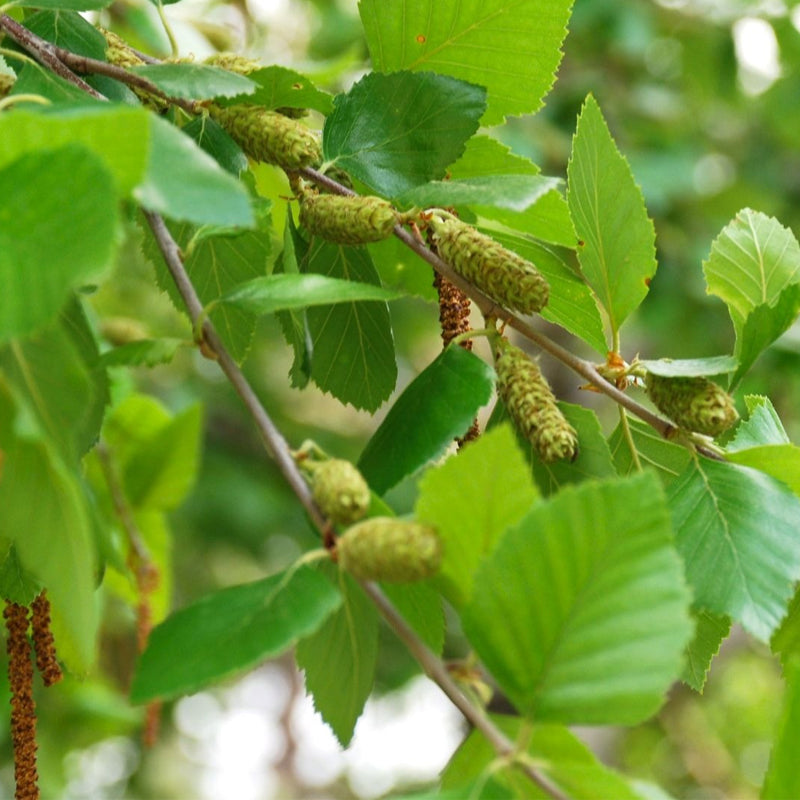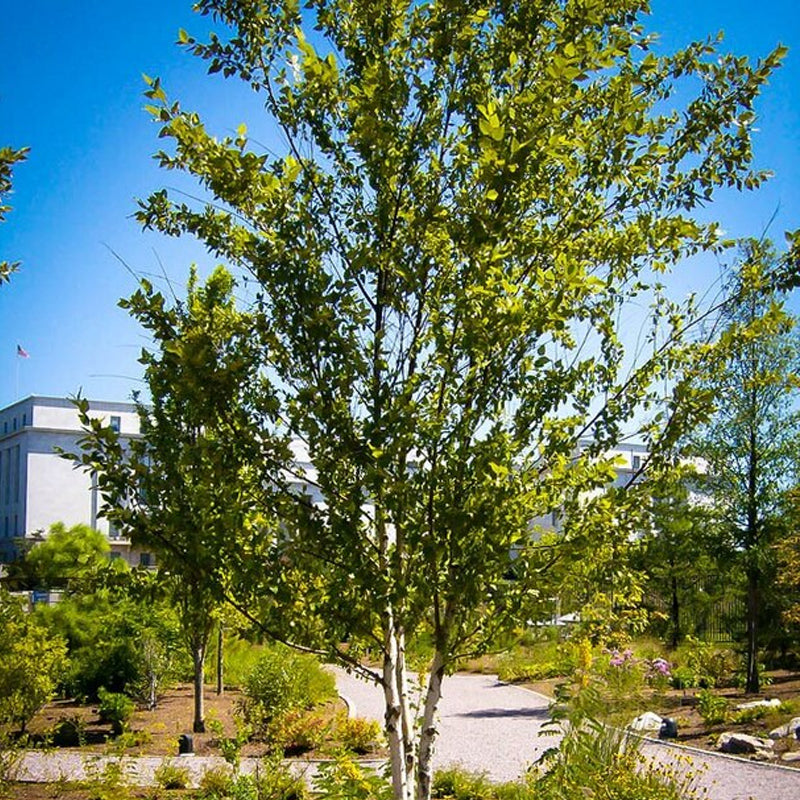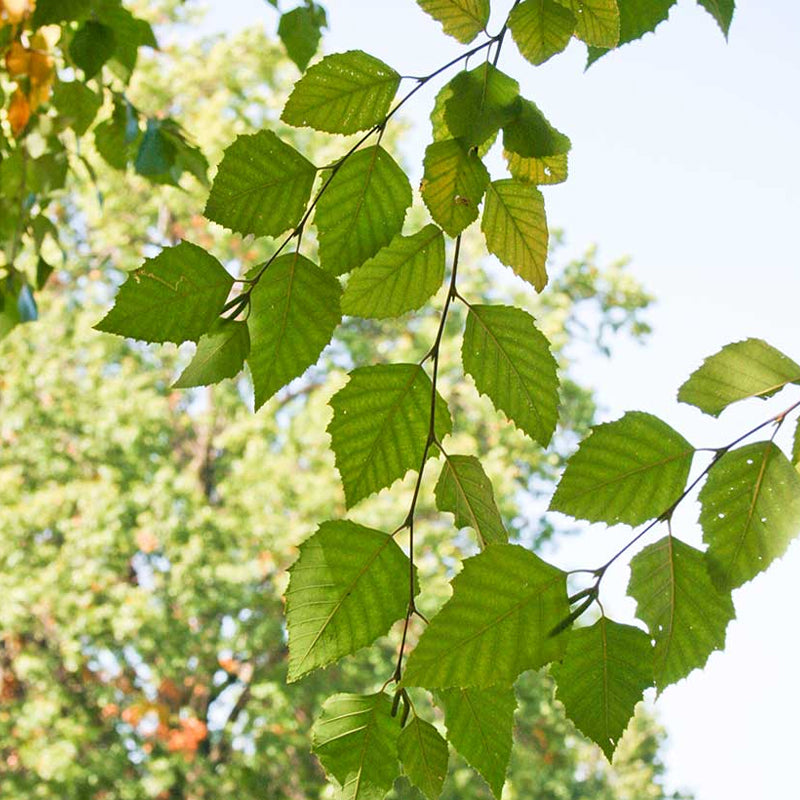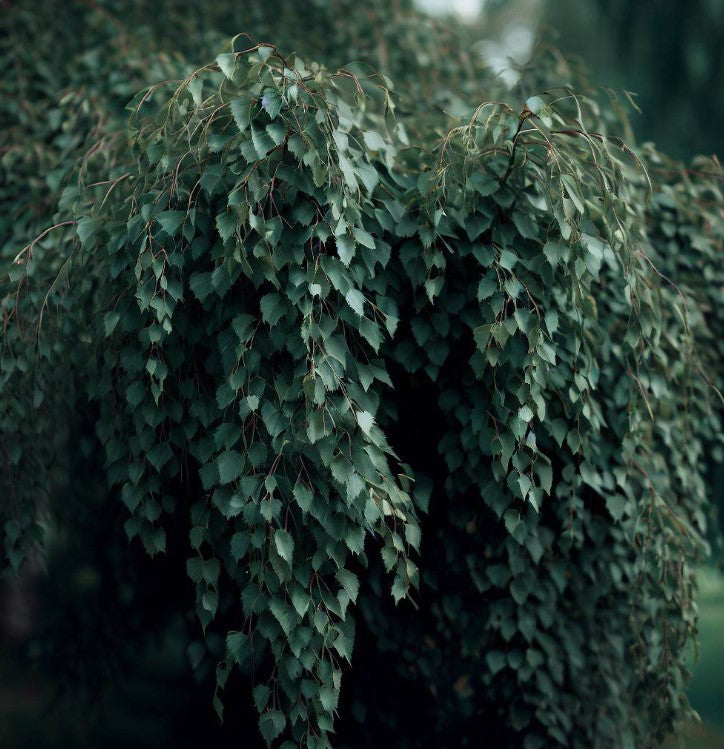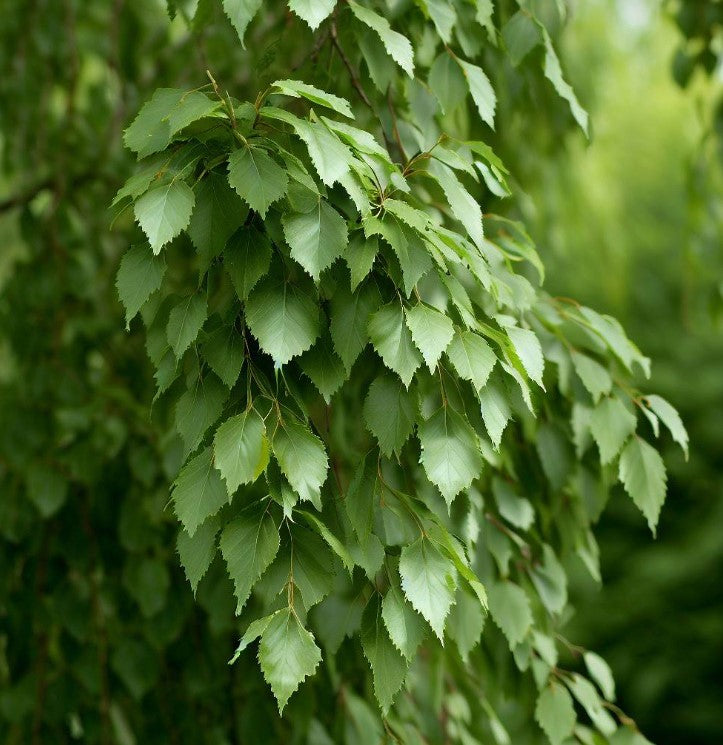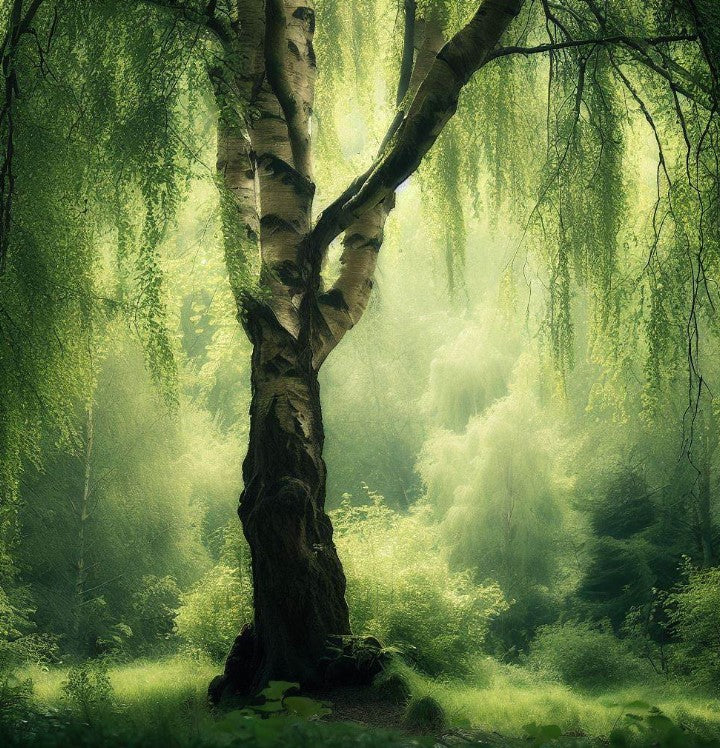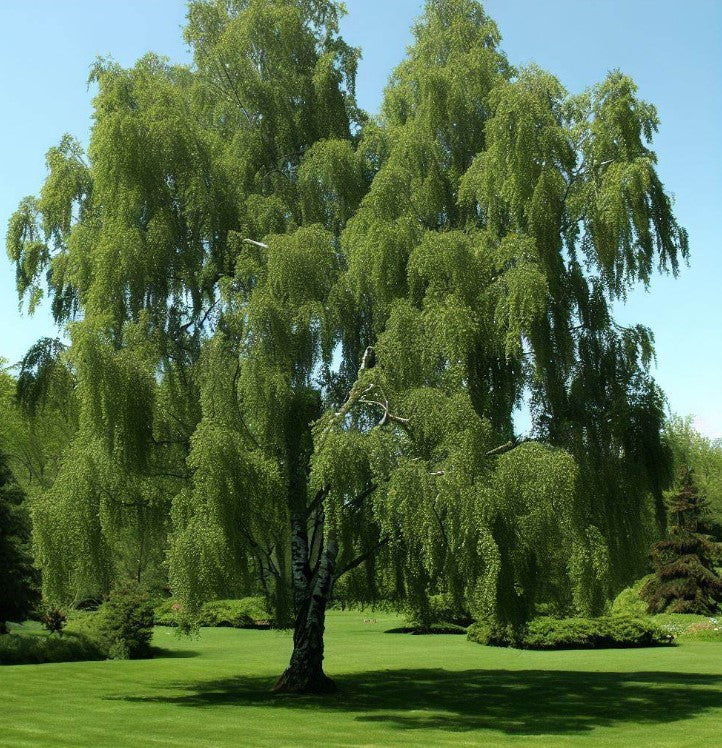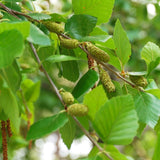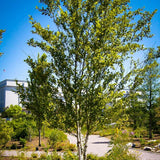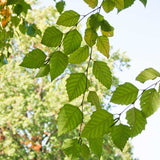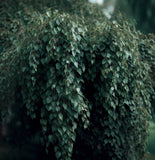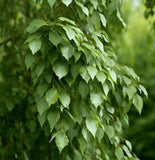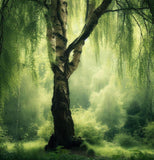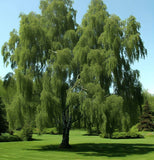Betula nigra Northern (River Birch)
Betula nigra Northern (River Birch) is a deciduous tree native to the eastern and central regions of North America. It is a medium-sized tree that typically grows to a height of 40 to 70 feet (12 to 21 meters) with a spread of 40 to 60 feet (12 to 18 meters). It has a slender, pyramidal to oval-shaped crown. The bark of mature trees is dark brown, exfoliating into papery, curling strips, revealing lighter-colored inner bark.
Leaves: The leaves of the Northern River Birch are simple and alternate. They are roughly diamond-shaped, measuring about 2 to 3 inches (5 to 7.5 centimeters) in length. The leaves have doubly serrated edges and are dark green on the upper surface, while the lower surface is lighter and may have a slightly hairy texture.
Flowers: Northern River Birch trees are monoecious, meaning they have separate male and female flowers on the same tree. The flowers are inconspicuous and appear as long, cylindrical catkins. The male catkins are yellowish-brown, while the female catkins are greenish.
Fruit: After pollination, the female catkins develop into small, winged nutlets that are dispersed by wind during the late spring or early summer.
Habitat and Range: Northern River Birch trees are commonly found along riverbanks, floodplains, and wetland areas. They are known for their tolerance of moist or poorly drained soils and are often planted for erosion control along waterways.
Ecological Importance: Northern River Birch trees provide habitat and food for various wildlife species. Birds such as finches and grouse feed on the seeds, while the foliage supports caterpillars, which are important food sources for birds and other insects. The trees also contribute to stabilizing riverbanks and preventing erosion.
Landscape Use: Northern River Birch is popularly used in landscaping and as an ornamental tree due to its attractive bark, unique form, and tolerance for wet conditions. Its exfoliating bark provides year-round visual interest, and it can be planted near water features, in wet areas, or as a specimen tree in gardens.
Maintenance: Northern River Birch trees are relatively low-maintenance. They prefer moist to wet soils but can tolerate a range of soil conditions, including clay and loam. Regular watering is recommended during dry periods, especially for young trees. Pruning is generally not necessary, but dead or damaged branches can be removed as needed.
Botanical Name : Betula nigra Northern
Common Name : River Birch
Height : 60 – 80 ft
Spread : 40 ft
Germination Info : Seed requires 30-60 days cold moist stratification
Hardiness zone : 4-8
Average seed per ounce : Approx.18,750
Germination Range: 50-70%

